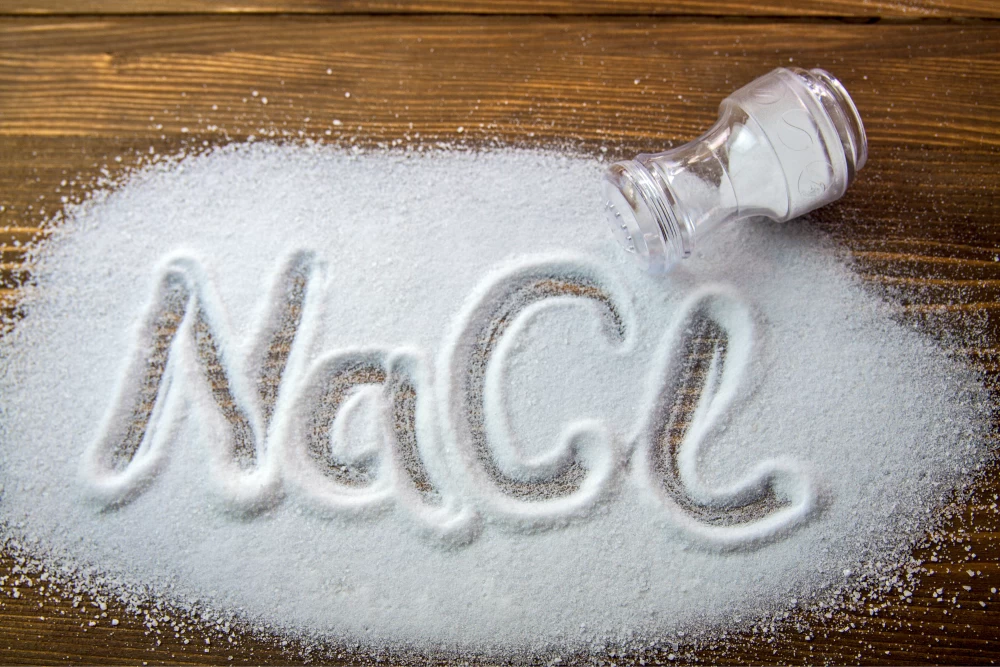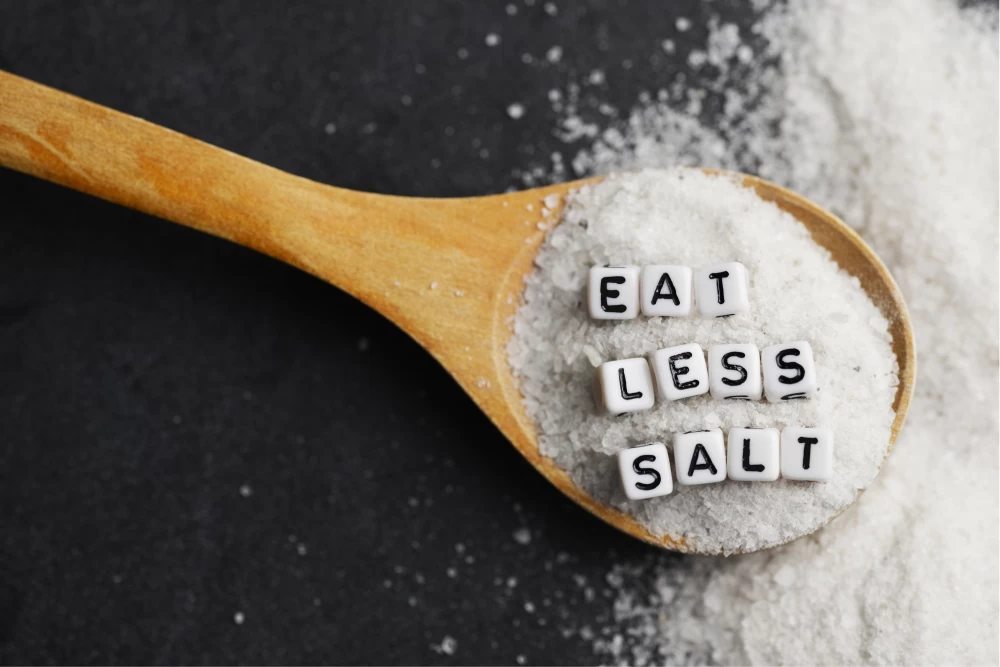
- 25th March 2023
Table of Contents
Reducing Sodium
Reducing sodium is a crucial step in maintaining a healthy diet, especially when managing fatty liver disease. High levels of sodium can lead to hypertension and fluid retention, which can further exacerbate the symptoms of fatty liver disease. Adopting a low-sodium diet can help reduce inflammation and improve overall liver function. To reduce sodium intake, it's important to read food labels and choose products with lower sodium content. Opt for fresh fruits and vegetables instead of canned or processed ones, as they often contain added salt. Cooking at home using herbs and spices instead of salt is also an effective way to cut down on sodium consumption. It's important to note that reducing sodium should be done gradually over time to avoid withdrawal symptoms such as headaches or dizziness. Gradually decreasing the amount of salt used in cooking or substituting with low-sodium alternatives such as potassium chloride can help make the transition easier. With dedication and effort, reducing sodium intake can greatly improve liver health and overall well-being.
Causes of Fatty Liver
Fatty liver, also known as hepatic steatosis, is a common condition that occurs when fat accumulates in the liver. This can be caused by a variety of factors, including obesity, high cholesterol and triglyceride levels, and type 2 diabetes. Fatty liver can also be caused by excessive alcohol consumption, which is known as alcoholic fatty liver disease. Another contributing factor to fatty liver is a diet high in sodium. Consuming too much sodium causes your body to retain fluid and can lead to swelling in various parts of the body, including the liver. To reduce your sodium intake and improve your fatty liver condition, it's important to limit processed foods that are typically high in sodium content. However, simply reducing your sodium intake isn't enough to treat fatty liver; you must also incorporate other dietary changes such as increasing fiber-rich foods like fruits and vegetables while limiting saturated fats from animal products. Additionally, regular exercise is crucial for managing this condition as it helps to reduce insulin resistance and inflammation in the body.
Dietary Recommendations
Reducing sodium in your diet can be a crucial step in managing fatty liver disease. The American Heart Association recommends limiting sodium intake to 2,300 milligrams per day or less, but many doctors recommend even lower amounts for those with liver disease. To reduce sodium, it’s important to read food labels carefully and look for low-sodium options. Fresh fruits and vegetables are naturally low in sodium and can be incorporated into meals as snacks or sides. Additionally, cooking at home rather than eating out can significantly decrease sodium intake. When cooking, use herbs and spices instead of salt to add flavor to dishes. Avoid processed meats like bacon and deli meats which are typically high in sodium. Lastly, be mindful of condiments such as ketchup, soy sauce, and salad dressings which also often contain high levels of sodium. By making these changes to your diet, you can manage fatty liver disease more effectively while improving overall health.

Types of Foods to Avoid
When it comes to maintaining a healthy diet, avoiding certain types of food is just as important as consuming the right ones. If you have a fatty liver, your doctor may recommend a special diet to help you manage your condition. One type of food that you should limit or avoid completely is processed and packaged foods since they are typically high in sodium. Sodium can cause water retention and increase blood pressure, which can be harmful to those with fatty liver disease. Another type of food that should be avoided when following a fatty liver diet is red meat. Red meat contains saturated fats which can increase cholesterol levels and contribute to the development of fatty liver disease. Instead, focus on lean protein sources like fish or poultry. Additionally, sugary drinks like soda and energy drinks should also be avoided because they contain high amounts of added sugars which contribute to weight gain and insulin resistance - both risk factors for developing non-alcoholic fatty liver disease (NAFLD).
Ways to Reduce Sodium Intake
Reducing sodium intake is an essential part of maintaining a healthy diet, especially for those with fatty liver disease. Excessive consumption of salt can lead to high blood pressure, heart disease, and other health problems. One way to reduce sodium intake is by avoiding processed foods and opting for fresh fruits and vegetables instead. Additionally, cooking at home allows individuals to have control over the amount of salt added to their meals. Another way to reduce sodium intake is by reading food labels carefully. Most packaged foods contain high levels of sodium, so it’s important to choose low-sodium options whenever possible. Drinking plenty of water can also help flush out excess sodium from the body. Lastly, incorporating herbs and spices into meals can add flavour without adding extra salt. Garlic, ginger, cumin, and turmeric are all great options that provide a wealth of health benefits in addition to enhancing the taste of food. By making small changes like these in their diet, individuals can successfully reduce their sodium intake and improve overall health.
Benefits of Reduced Sodium Diet
Reducing your sodium intake can have significant benefits for your overall health, particularly if you are following a fatty liver diet. A high-sodium diet is linked to several health problems, including high blood pressure, heart disease, and stroke. Additionally, consuming too much salt can increase the risk of developing a fatty liver. By reducing sodium in your diet, you may experience improved blood pressure and reduced inflammation throughout the body. Lowering your sodium intake can also help reduce fluid retention and bloating. These changes may not only make you feel better but could also lead to weight loss as excess water weight is shed. Making small adjustments in your daily eating habits by switching out high-sodium processed foods with fresh fruits and vegetables or low-sodium options can make a significant difference in how you feel. If you're looking to follow a fatty liver diet or simply want to improve your overall health, reducing sodium should be one of the first things on your list.
Conclusion: Healthy Lifestyle Choices
In conclusion, maintaining a healthy lifestyle is crucial to preventing and managing fatty liver disease. One of the key ways to do this is by reducing sodium in your diet. Sodium can contribute to high blood pressure, which is a risk factor for liver disease. It's important to be aware of hidden sources of sodium, such as processed foods and condiments like ketchup and soy sauce. In addition to reducing sodium intake, incorporating other healthy habits into your lifestyle can also make a big difference. This includes regular exercise, getting enough sleep, and eating a balanced diet that includes plenty of fruits, vegetables, lean proteins, whole grains and healthy fats. Ultimately, making these lifestyle changes may not only help prevent or manage fatty liver disease but also improve overall health and wellbeing. By taking small steps towards healthier choices each day, you can feel better both physically and mentally while reducing the risk of chronic diseases like liver disease in the long run.
